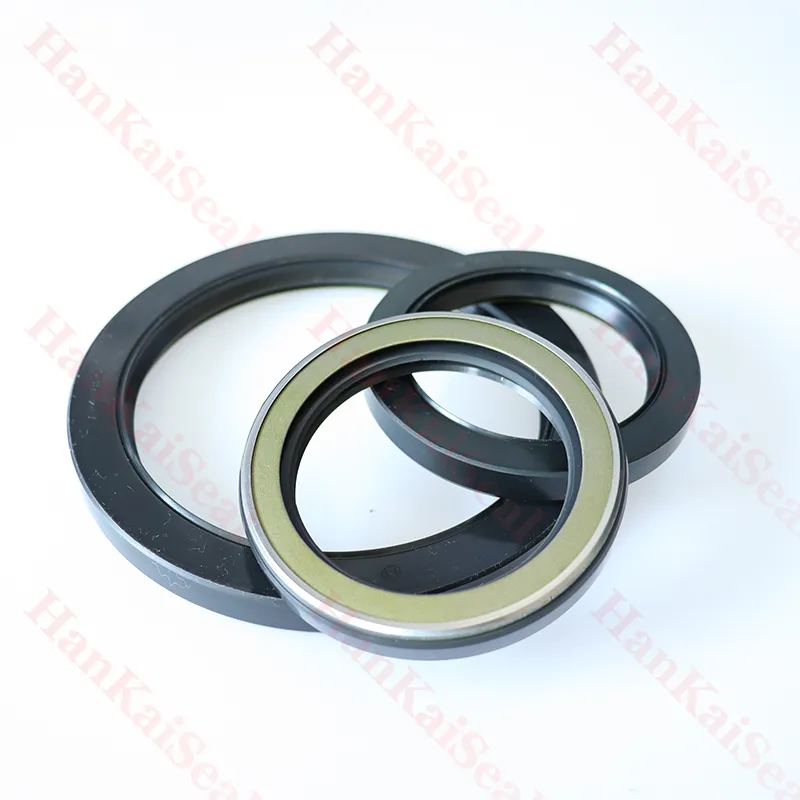Jan . 02, 2025 17:43 Back to list
wiper seals
Understanding Wiper Seals An Essential Component for Fluid Control
Wiper seals, often overlooked in discussions about mechanical components, play a crucial role in various industrial applications, particularly in the fields of hydraulics and pneumatics. These seals are designed to remove contaminants from the surfaces of moving parts, ensuring that the operation of machines remains efficient and effective. In this article, we will delve into the significance of wiper seals, their construction, applications, and maintenance, providing insight into why they are essential in fluid control systems.
What are Wiper Seals?
Wiper seals, sometimes referred to as scraper seals, are specifically crafted to wipe away dirt, dust, and other debris from a piston rod or shaft. They are typically positioned at the outermost part of a sealing assembly. The primary function of these seals is to prevent contaminants from entering the hydraulic or pneumatic systems, which can lead to accelerated wear and potential failure of internal components.
Construction and Design
Wiper seals are usually made from elastomeric materials such as polyurethane, rubber, or silicone, depending on the applications’ requirements. The design of wiper seals can vary significantly based on factors such as the system pressure, motion speed, and operating environment. Some common designs include lip seals, U-cup seals, and custom profiles tailored for specific applications.
The construction involves careful engineering to ensure that the seal maintains contact with the moving surface while not generating excessive drag. The lip of the wiper seal is designed to create a thin barrier that effectively removes contaminants while allowing for smooth relative motion between the different components.
Applications of Wiper Seals
wiper seals

Wiper seals find their use in a wide range of applications across several industries. They are commonly employed in hydraulic cylinders, pneumatic cylinders, automotive applications, and various machinery used in manufacturing processes. For instance, in hydraulic systems, wiper seals help maintain the integrity of the hydraulic fluid by preventing the ingress of harmful particles that could interfere with operations.
In the automotive industry, wiper seals are critical in preventing dirt and water from entering the hydraulic systems of vehicles, protecting components such as shock absorbers and steering systems. Additionally, in construction equipment, wiper seals ensure that the hydraulic systems function optimally, reducing maintenance costs and downtime.
Maintenance and Best Practices
To ensure the longevity and effectiveness of wiper seals, regular maintenance is essential. Routine inspections can help identify any signs of wear, such as cracking or flattening of the seal. It is also crucial to ensure that the sealing surfaces are clean and free from debris before assembling components.
Another best practice involves checking the operating conditions, such as temperature and pressure, to ensure they remain within specified limits, as excessive pressure or extreme temperatures can lead to premature failure of wiper seals.
Conclusion
In conclusion, wiper seals are a vital yet often underestimated component in fluid control systems. Their ability to keep contaminants at bay is essential for the longevity and reliability of various mechanical systems. By understanding their design, applications, and maintenance requirements, industries can enhance the performance of their equipment and minimize operational downtime. Investing in quality wiper seals and adhering to maintenance protocols will ultimately lead to improved efficiency and reduced costs in the long run. As technology advances, we can expect further innovations in wiper seal design, tailoring them even more closely to the needs of modern applications.
-
The Trans-formative Journey of Wheel Hub Oil Seals
NewsJun.06,2025
-
Graphene-Enhanced Oil Seals: Revolutionizing High-Pressure Oil Sealing
NewsJun.06,2025
-
Future of Hydraulic Sealing: Advanced Intelligent TCN Oil Seals
NewsJun.06,2025
-
Don’t Let a Broken TCV Oil Seal Ruin Your Day
NewsJun.06,2025
-
Bio-Inspired Dust Seals for Better Sealing Performance
NewsJun.06,2025
-
Biodegradable and Sustainable Hydraulic Seal Materials
NewsJun.06,2025
-
Top Oil Seal Solutions for Your Industrial Needs
NewsMay.22,2025
Products categories
















